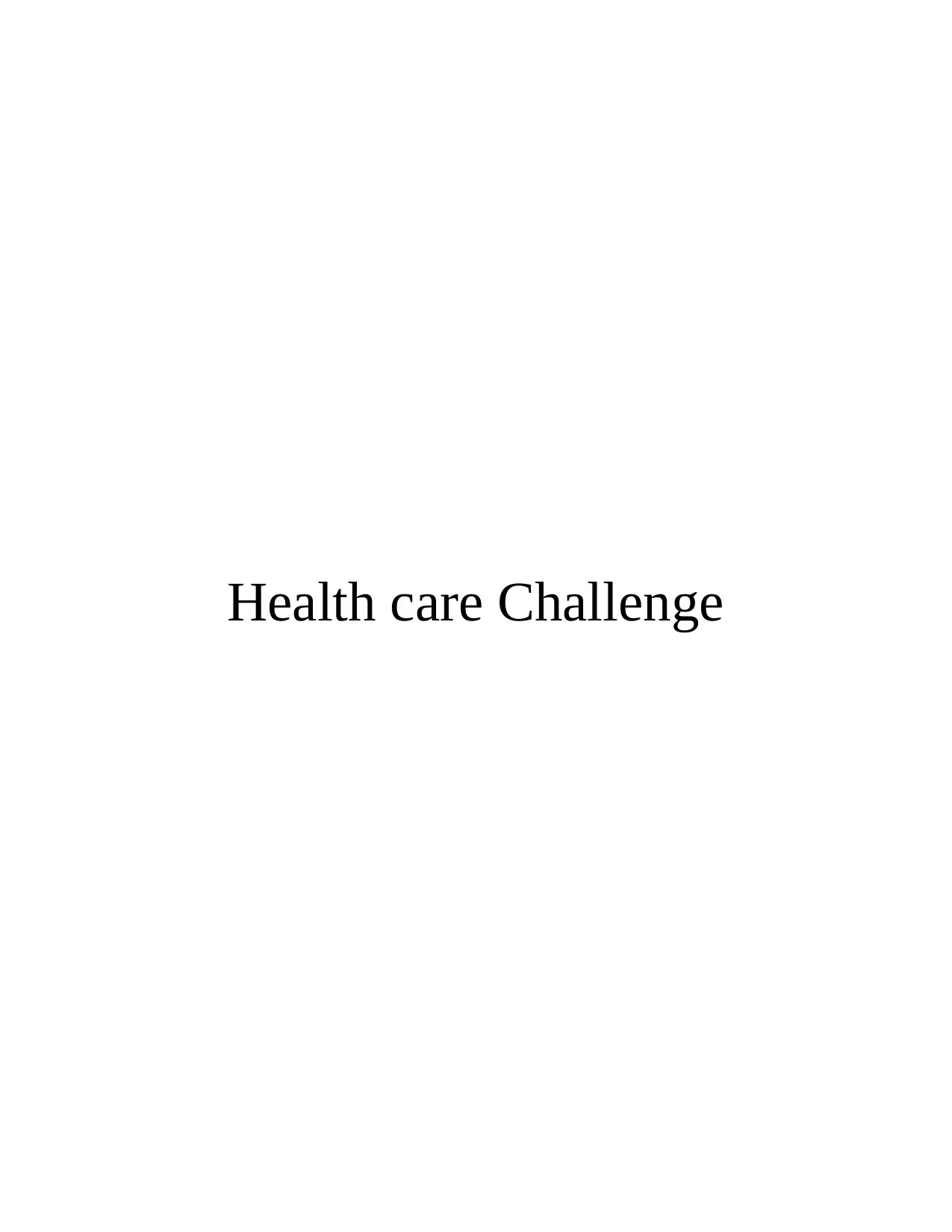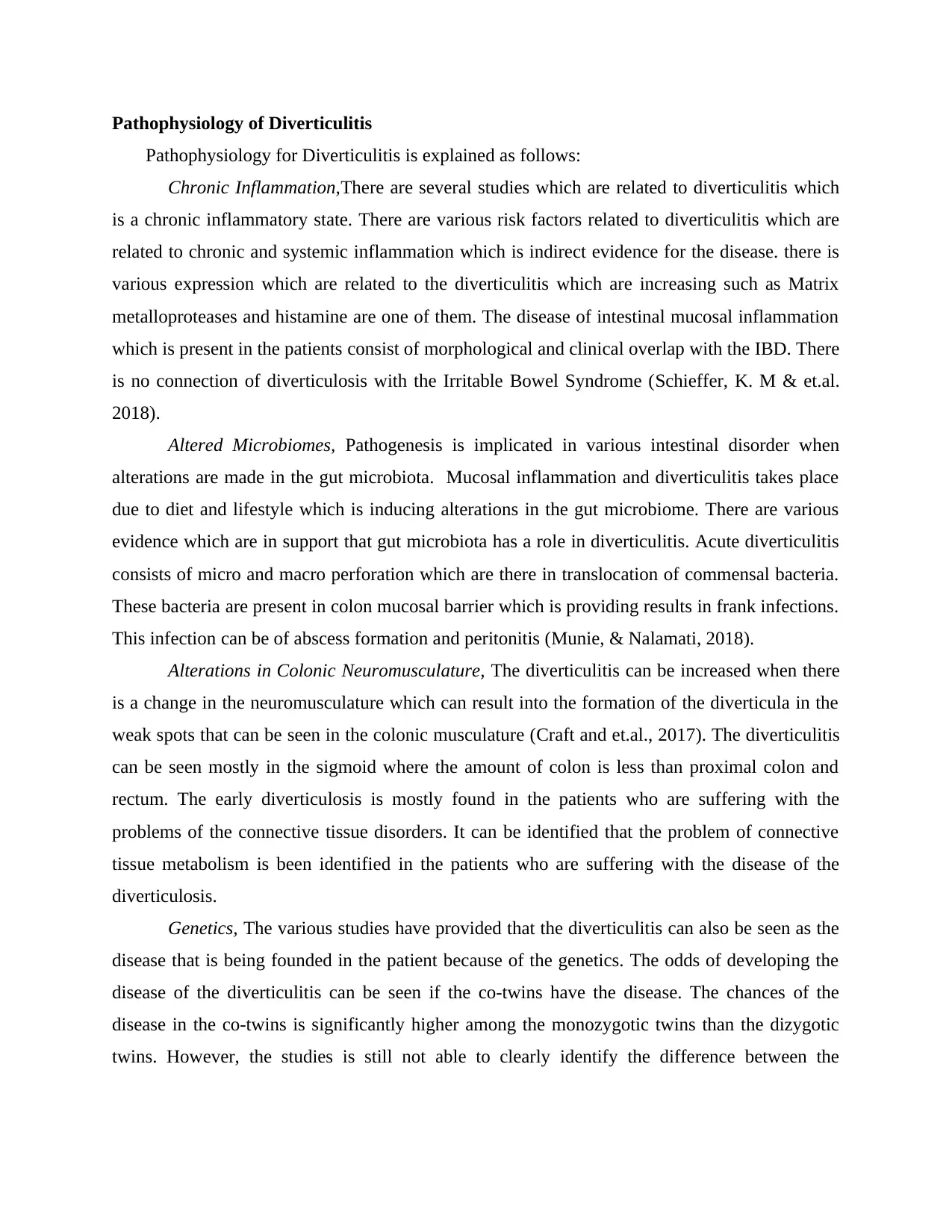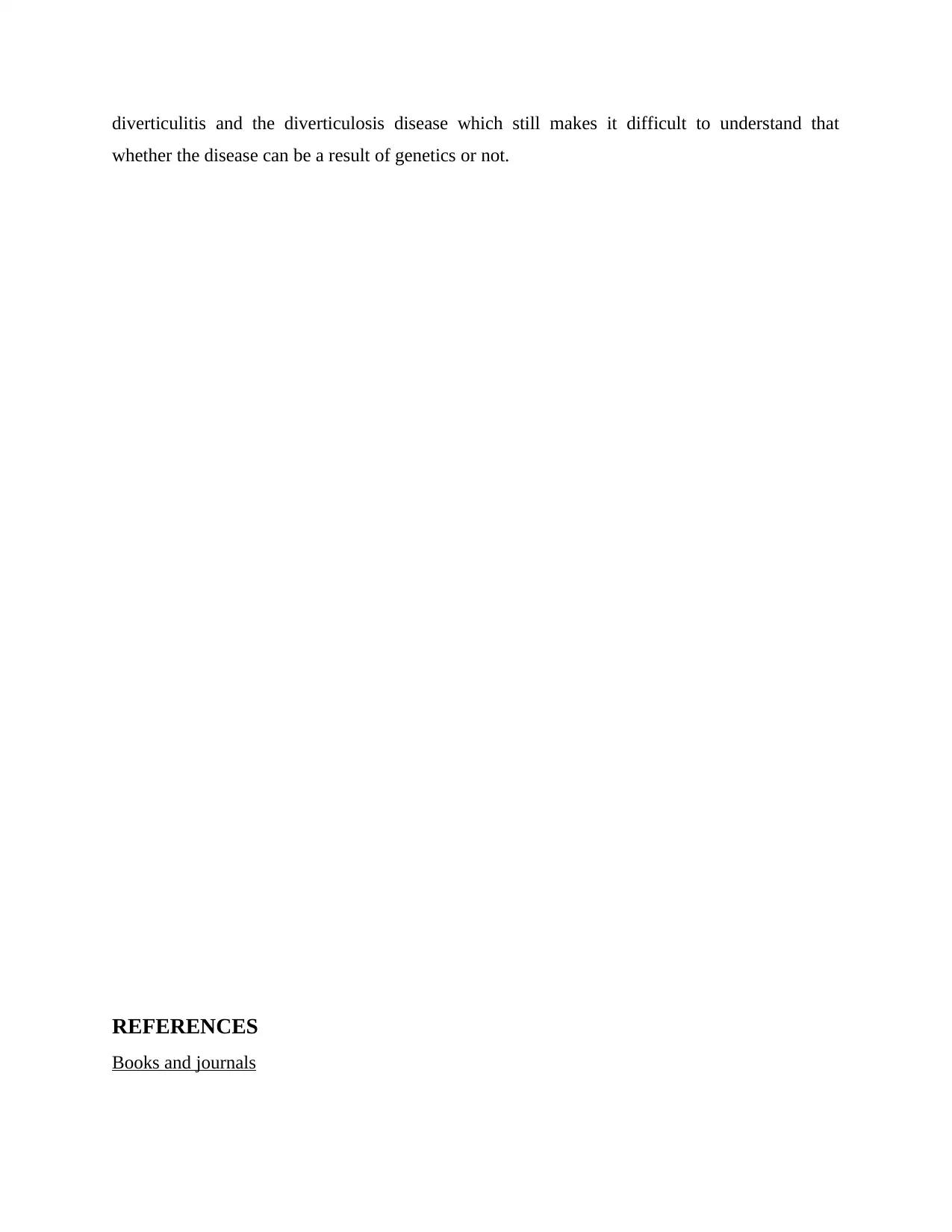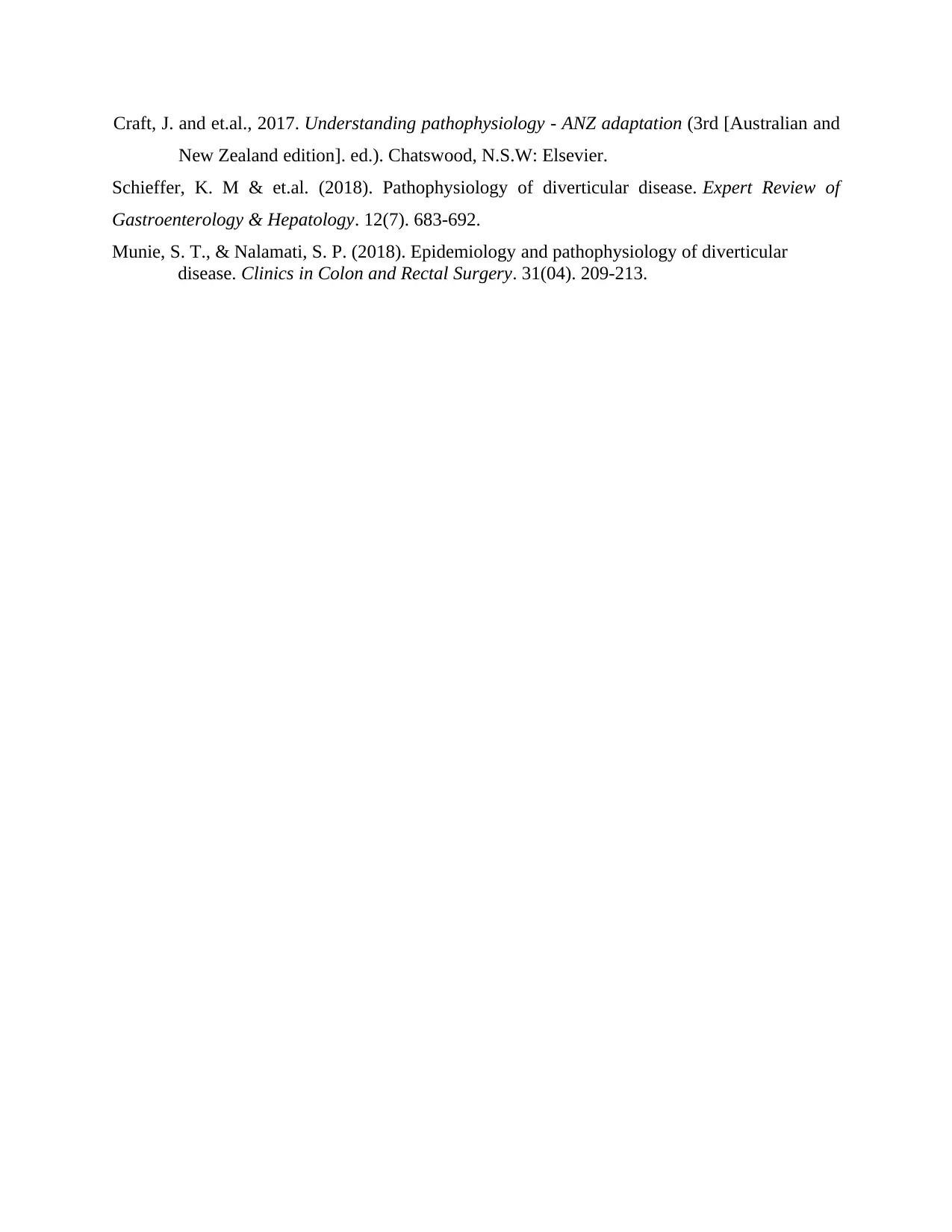Health Care Challenge: Diverticulitis Pathophysiology and Nursing
VerifiedAdded on 2023/06/10
|4
|558
|314
Essay
AI Summary
This essay addresses the healthcare challenge of diverticulitis, focusing on its pathophysiology, treatment options, and the role of registered nurses in providing care and managing exacerbations. The essay begins with an overview of diverticulitis, followed by an in-depth explanation of the underlying pathophysiology, including chronic inflammation, altered microbiomes, alterations in colonic neuromusculature, and genetic factors. It then identifies and describes two credible treatment options, emphasizing evidence-based practices relevant to Australian nursing standards. The essay thoroughly examines the roles of registered nurses in both preventing and managing exacerbations of diverticulitis, highlighting the importance of collaborative care within the Australian healthcare context. The paper is structured with an introduction, body paragraphs supported by research evidence, and a conclusion, and adheres to scholarly writing conventions with in-text citations and a comprehensive reference list. The essay highlights the importance of understanding diverticulitis and the significance of nursing interventions to improve patient outcomes.
1 out of 4










![[object Object]](/_next/static/media/star-bottom.7253800d.svg)